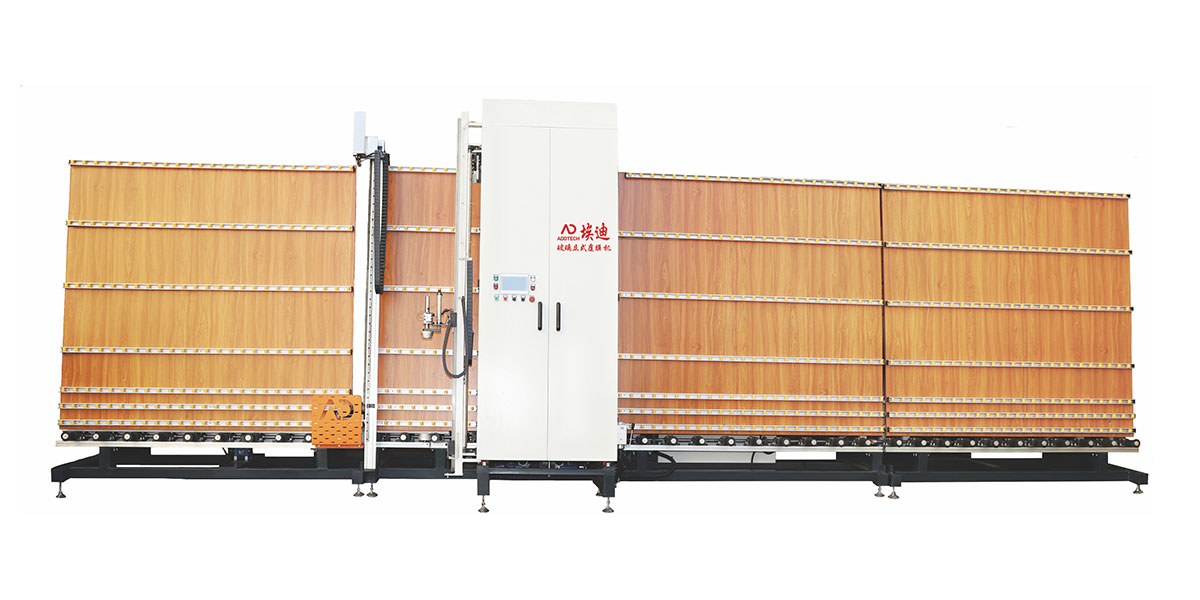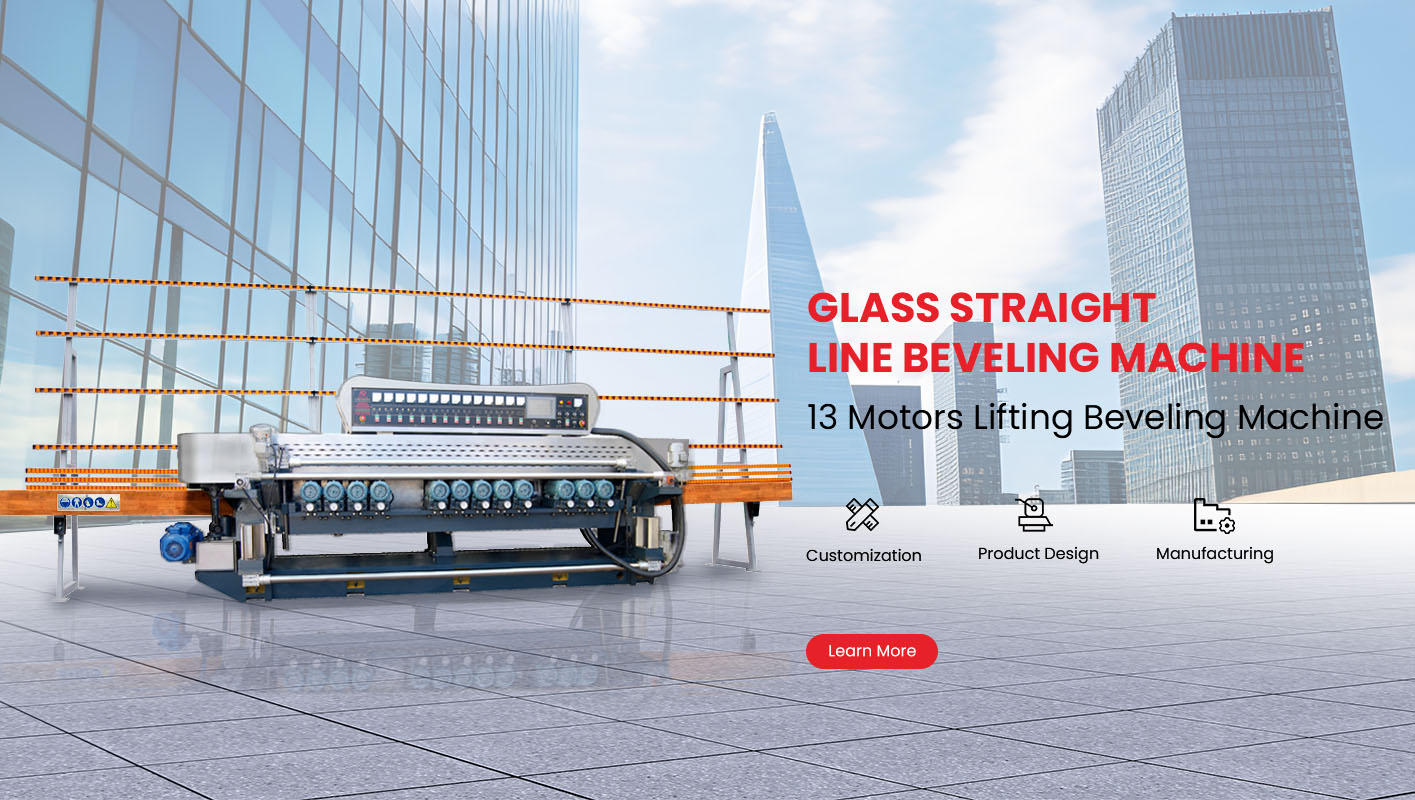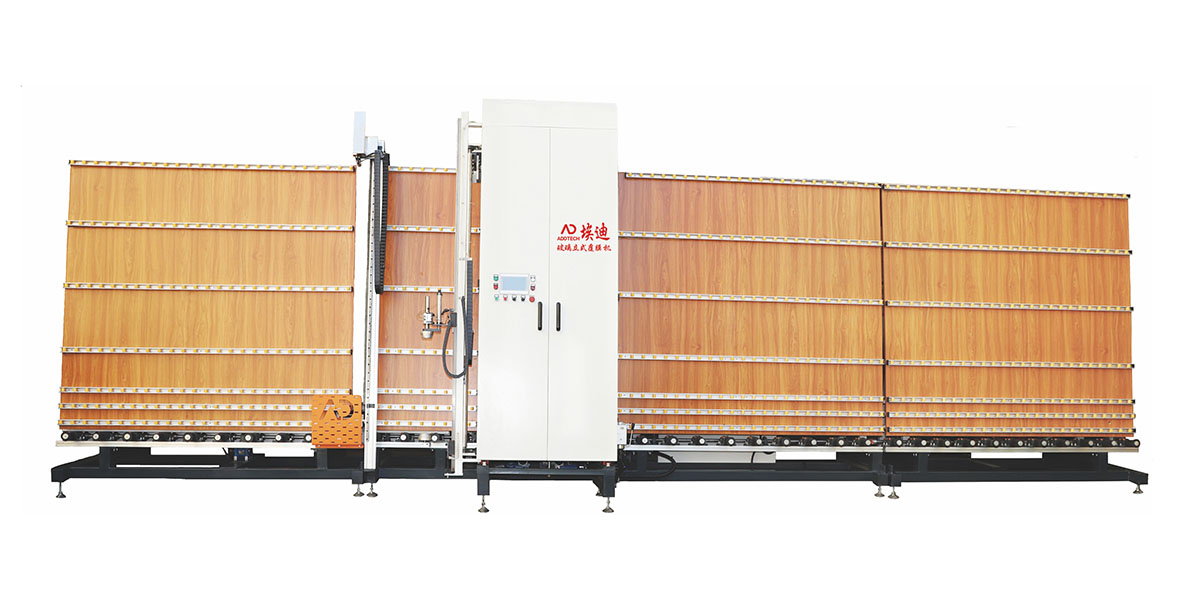Glass Double Sided Film Laminating Machine
- Product Information
Glass Double Sided Film Laminating Machine is an automated equipment specially used for laminating protective films on both sides of glass. It is commonly used in the processing of tempered glass, cover glass, touch glass, display modules and other materials. The equipment achieves high-speed, bubble-free, and crease-free laminating effects through precision mechanical transmission system, constant pressure control technology and electrostatic dust removal system, improves product yield and production efficiency, and is widely used in electronic manufacturing, automotive glass processing, architectural decorative glass, photovoltaic panels and other fields.

Technical Specifications:
| Item | Technical Specifications |
| Model Number | ADFM2000A |
| Voltage | 380V/50Hz |
| Power | 3.8kw |
| Max size | 3500×2000mm |
| Min size | 500×200mm |
| Glass thickness | 3-60mm |
| Feeding speed | 15m/min |
| Cutting speed | 20m/min |
| Weight of machine | 1300kg |
| Overall size | 8500×2800×1500mm |
| OEM/ODM | Accept |
| Compay Nature | China Manufacturers Suppliers Factory |
Core Features
1. Dual-Side Synchronous Lamination
The equipment adopts an upper and lower double laminating structure design, which can laminat both sides of the glass at the same time, and the laminating synchronization error is controlled within **±0.05mm, which greatly improves production capacity. The equipment is equipped with independently driven upper and lower film unwinding mechanisms and constant tension control systems** to ensure that the upper and lower film materials are fed synchronously, without dislocation or stretching, and the laminating is neat and wrinkle-free.
Applicable glass size range: width 50800mm, length 501500mm; Laminating speed: up to 600mm/s, adjusted according to different processes.
2. Precision Constant Pressure Roller
The built-in high-precision servo-controlled roller system can intelligently adjust the pressure according to the glass thickness and the hardness of the film material to ensure uniform and stable pressure during the film laminating process and avoid bubbles or local film folding problems. The pressure control accuracy of the roller reaches **±0.1kgf**, and the laminating pressure can be freely adjusted within the range of 0.5~3.0kgf/cm² to meet the requirements of various film thicknesses (10μm~200μm) and hardness.
3. Automatic dust removal and static elimination system (Dust Removal + Ionizing Technology)
The upper and lower ion wind bars + roller brush dust removal system are configured before film laminating to effectively eliminate surface static electricity and dust particles. Through the HEPA high-efficiency filtration and dust collection module and anti-static air knife combined cleaning, the cleanliness of the glass surface is ensured to reach the Class 100 cleanliness standard, reducing film defects from the source, such as particle bubbling, spots, and false pasting.
4. Intelligent visual positioning system (CCD Alignment & Inspection)
The advanced model has a built-in dual-camera CCD alignment system for automatic positioning and angle correction before the glass and film are bonded. The system recognition accuracy reaches **±0.03mm**, which is especially suitable for precise film bonding of special-shaped glass and perforated glass to prevent crooked pasting or edge missing.
At the same time, the system can also be connected to the AOI detection function to automatically identify defects such as bubbles, scratches, and missing pasting, and the production line can achieve closed-loop quality control.
5. High-efficiency automatic loading and unloading platform (Auto Feeding & Collection System)
Adopting a servo adsorption transmission structure, loading and unloading are fully automatic, saving manpower, and supporting connection to assembly lines or robotic arm docking. It supports a glass buffer that can accommodate up to 200 pieces, automatically switching intervals, and is suitable for medium and large-scale continuous production.
The platform has the functions of false suction detection and self-identification of glass size. It can adapt to glass substrates with a thickness range of 0.3~5mm, and thin sheets can also be stably transmitted without damage.
6. Modular Maintenance Design
The whole machine adopts a modular assembly structure, which is convenient for maintenance and fast for locating equipment faults. The laminating unit, dust removal unit, and electric control box are separated, which is conducive to maintenance and upgrading. The main control unit is based on the PLC+touch screen interface, which supports Chinese and English, is intuitive to operate, and parameters can be stored and called with one click.
Detailed explanation of application scenarios
1. Processing of smartphone and flat glass cover
In the manufacturing process of mobile phone screens, the glass cover needs to be laminated with a high-transmittance protective film before leaving the factory to prevent scratches, fingerprint contamination, or subsequent processing damage. The double-sided film laminating machine can complete the film laminating on both sides simultaneously, improve efficiency and reduce the risk of secondary contamination between processes. It is particularly suitable for the film laminating of 2.5D or 3D corner glass.
2. Display module glass protection and transportation
Display modules such as OLED and Mini LED need to be coated with antistatic film on both sides before lamination and testing to prevent dust intrusion and fingerprint contamination. The glass after lamination can be directly used for transportation, storage and intermediate transfer, improving the yield of the entire module line. Double-sided lamination ensures that the module is fully protected between the upper and lower processes.
3. Automobile central control and instrument glass
The automotive field has higher requirements for the appearance and cleanliness of central control panels, HUD glass, etc. The glass double-sided laminating machine can achieve high-definition lamination without particles and bubbles, ensuring that the surface of the factory glass is free of scratches and static adsorption. It is suitable for batch central control glass processing plants or Tier 1 auto parts manufacturers' supporting production lines.
4. Photovoltaic glass film lamination
Photovoltaic modules often need to be laminated with protective film on double-sided glass before transportation and packaging to prevent scratches, oxidation or contamination. The double-sided film laminating machine can compress the double-sided film laminating process into a single process, reduce manual handling, shorten the production cycle, and is suitable for large-size, high-capacity photovoltaic glass packaging needs.
5. Architectural decorative glass/home appliance panel film laminating
Home appliance panels such as ovens, microwave oven glass, or silk-screen glass for architectural decoration can be filmed before leaving the factory to prevent scratches during the construction phase. The equipment can quickly adapt to flat glass of different sizes and shapes, and supports automatic avoidance of customized hole positions. It is commonly used in glass deep processing factories, building hardware accessories factories, etc.




